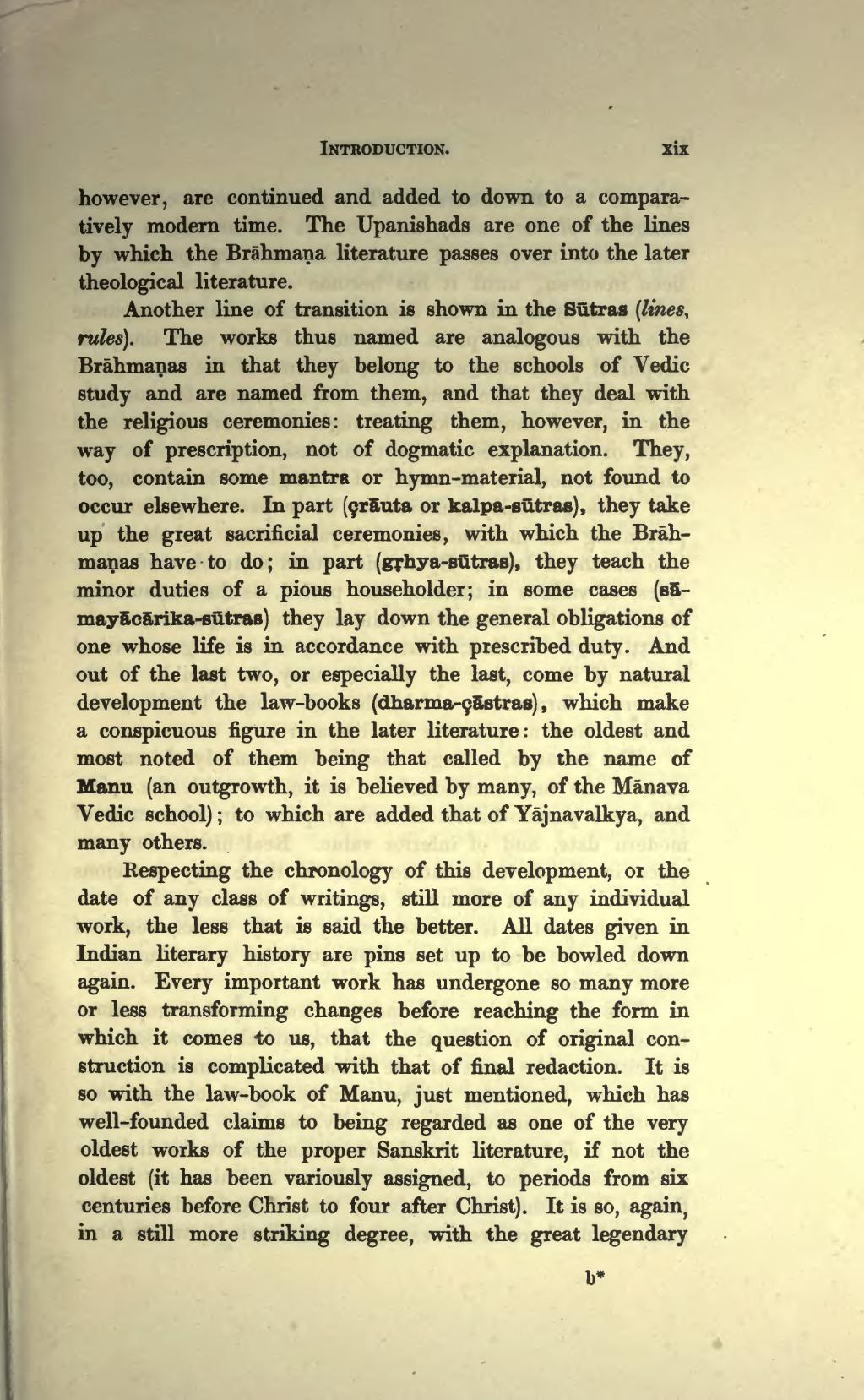however, are continued and added to down to a comparatively modern time. The Upanishads are one of the lines by which the Brāhmaṇa literature passes over into the later theological literature.
Another line of transition is shown in the Sūtras (lines, rules). The works thus named are analogous with the Brāhmaṇas in that they belong to the schools of Vedic study and are named from them, and that they deal with the religious ceremonies: treating them, however, in the way of prescription, not of dogmatic explanation. They, too, contain some mantra or hymn-material, not found to occur elsewhere. In part (çrāuta or kalpa-sūtras), they take up the great sacrificial ceremonies, with which the Brāhmaṇas have to do; in part (gṛhya-sūtras), they teach the minor duties of a pious householder; in some cases (sā-mayācārika-sūtras) they lay down the general obligations of one whose life is in accordance with prescribed duty. And out of the last two, or especially the last, come by natural development the law-books (dharma-çāstras), which make a conspicuous figure in the later literature: the oldest and most noted of them being that called by the name of Manu (an outgrowth, it is believed by many, of the Mānava Vedic school); to which are added that of Yājnavalkya, and many others.
Respecting the chronology of this development, or the date of any class of writings, still more of any individual work, the less that is said the better. All dates given in Indian literary history are pins set up to be bowled down again. Every important work has undergone so many more or less transforming changes before reaching the form in which it comes to us, that the question of original construction is complicated with that of final redaction. It is so with the law-book of Manu, just mentioned, which has well-founded claims to being regarded as one of the very oldest works of the proper Sanskrit literature, if not the oldest (it has variously been assigned, to periods from six centuries before Christ to four after Christ). It is so, again, in a still more striking degree, with the great legendary
